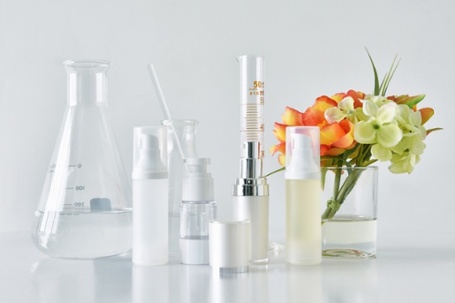What is the purpose of a dermatology trial? Our patients often inquire about work done at Skin Search. We sat down with our research team and asked them the questions that you want answers to.
The purpose of a dermatology trial is to investigate the safety and efficacy of medicines that are not approved by the FDA. Dermatology trials include treatment of skin, hair, and nails. There are different types of dermatology trials: topical medicines including ointments, creams, and gels to treat acne, precancerous lesions, eczema, fungus, athlete’s foot, and psoriasis. Oral medicines are used to treat most if not all of the same conditions, and injectable medicines are used to treat diseases like psoriasis and eczema.
Participants in research trials are expected to: have the condition being investigtaed; to follow the directions in the research protocol; to report changes in medications and illnesses that occur during study participation; to use the research medicine as directed in the protocol; to keep all their research appointments and attend appointments within the timeframe outlined in the research protocol; and be truthful about their medical history.

In the research trials conducted at Skin Search, every participant must have the condition being investigated.
How do you find out if you’re a candidate for a clinical study? You must come in for a screening visit at Skin Search. You can inquire about those here.
What is the duration of a clinical trial? The shortest research trial conducted at Skin Search was 15 days, the longest trial conducted was 6 years.
When a potential participant comes in for a trial, they are given a research consent form to read and sign, as this must be completed before any research activities can be performed. Once this is complete, an exam is performed by one of our investigators to determine if the participant is eligble. A physical exam, blood work, pregnancy test, and ECG may be conducted if required by the research protocol.
If a potential subject is deemed eligible, they are scheduled to return for appointments per the protocol’s schedule of events.
There are four distinct stages of trials:
- Stage One is conducted in healthy humans for the first time. Safety data is collected to ensure the medicine is safe enough to proceed to Stage Two.
- Stage Two trials are sometimes called proof of concept. A small population of subjects with the disease are studied, and data is collected on safety. Efficacy is a secondary end point in a Stage Two trial.
- In Stage Three trials, a much larger population of subjects are needed. Usually two identical trials are conducted simultaneously to ensure the results are consistent. The data from Stage Three trials is presented to the FDA with an application for drug approval. Data from all phases is submitted to the FDA, but Stage Three data is the information used to support the approval application.
- Stage Four studies are after-market trials that are conducted to collect long-term safety data.
What about reactions to study drugs?
A reaction has to be evaluated to determine if it is safe to continue using the drug. Symptoms such as redness from a topical drug may not be permanent, or may occur as a side effect as the skin becomes accustomed to the drug.
I’M INTERESTED IN SKIN SEARCH STUDIES.

Leave a Reply